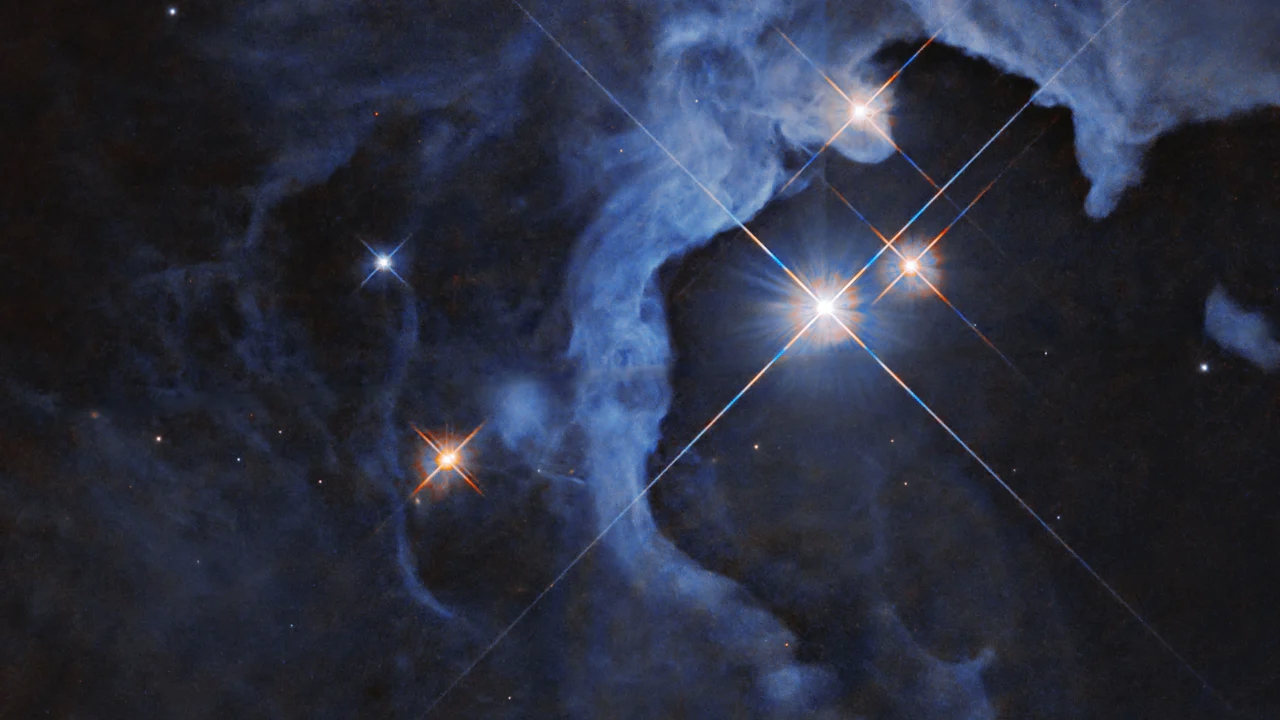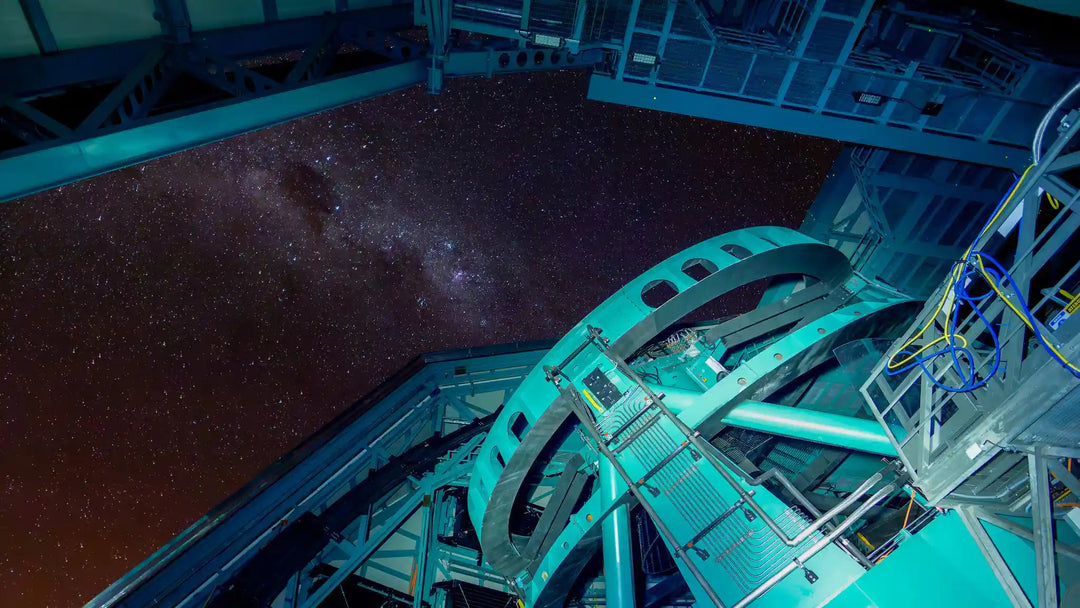Hubble Telescope Captures a Stellar Trio: The Dawn of a Sun-like Star

The universe continues to mesmerize us with its boundless wonders, and the latest image from NASA's Hubble Space Telescope does not disappoint. This celestial snapshot brings into focus a breathtaking scene of a triple-star system emerging from a reflection nebula, resembling a dazzling cosmic geode. Among the stars is the variable star HP Tau, a T Tauri star that offers a glimpse into the early evolutionary stages of stars like our Sun.
A Glimpse into Stellar Birth: The Triple-Star System
What are T Tauri Stars? Space Phenomenon
At the heart of this cosmic spectacle is HP Tau, classified as a T Tauri star—a young, pre-main-sequence variable star. T Tauri stars are unique because they haven't yet commenced nuclear fusion but are on the path to becoming hydrogen-fueled stars similar to our Sun. These embryonic stars are typically less than 10 million years old, a stark contrast to our nearly 4.6 billion-year-old Sun.
Read more:
James Webb Space Telescope uncovers young stars in NGC 346’s dusty ribbons
The Earthrise Photo: A Journey Through Earth’s Iconic Space Portrait
- The Pale Blue Dot Photo: History, Significance, and Legacy
- Pale Blue Dot Image: What About Large Format Prints like Fine Art?
JADES-GS-z14-0: NASA's JWST Discovering the Most Distant Galaxy
Enceladus holds potential for alien life with recent discovery of vital element
Anticipating the celestial show – Betelgeuse's potential supernova event
Supernova 2020eyj: First radio signal from the massive explosion of a dying white dwarf
The Dazzling Trio: HP Tau, HP Tau G2, and HP Tau G3
This stellar trio comprises HP Tau, HP Tau G2, and HP Tau G3, nestled within a reflection nebula in the constellation of Taurus, approximately 550 light-years away. This nebula doesn't produce its own light but instead reflects the brilliance of the stars within, much like fog illuminated by a car's headlights.

Check our stellar prints - perfect for space lovers
Cosmic Dynamics: Understanding Brightness Variations
Variable Stars and Their Ever-Changing Brilliance
HP Tau, like all T Tauri stars, exhibits variable brightness. These fluctuations can be periodic or random, driven by multiple factors such as changes in the accretion disk, material influx from the disk onto the star, and stellar flares. Periodic changes often result from the rotation of giant sunspots on the star's surface, coming in and out of view.
Check also:
Reflection Nebula: The Celestial Light Show
The reflection nebula surrounding HP Tau shines not because it emits light, but due to the light from the embedded stars bouncing off its gas and dust. This phenomenon is similar to the way light from car headlights diffuses in the fog, giving us a splendid view of the nebula's contours against the backdrop of the cosmos.
Protoplanetary Disks: The Cradle of Planet Formation
The Hubble Space Telescope's observation of HP Tau is part of a broader investigation into protoplanetary disks. These disks, composed of gas and dust, are crucial as they coalesce over millions of years to form planets. Understanding these disks is fundamental to grasping how solar systems like our own come into existence.
Check our stellar prints - perfect for space lovers
Summary: Hubble Telescope Reveals a Dawn of the Sun-like Star
The Hubble Space Telescope continues to expand our horizons, capturing the earliest stages of stellar evolution. The dazzling image of HP Tau and its companions not only provides a deep look into the cosmos but also helps scientists untangle the complex processes involved in star and planet formation. As we marvel at these celestial wonders, we gain a deeper appreciation for the intricate and awe-inspiring mechanics of our universe.
By comprehending the phenomena displayed in this stunning Hubble capture, we get a step closer to unraveling the universe's cosmic mysteries, sparking curiosity and expanding knowledge for space enthusiasts and the general public alike.
FAQ: You Ask - We Answer
What is a T Tauri Star?
A T Tauri star is a very young, pre-main-sequence star that hasn't started nuclear fusion yet. These stars are generally less than 10 million years old and are found surrounded by the dust and gas clouds from which they formed.
Why is HP Tau's Brightness Variable?
The brightness of HP Tau varies due to several factors, including instabilities in its accretion disk, material falling onto the star, and rotational spotting caused by giant sunspots.
What is a Reflection Nebula?
A reflection nebula shines not by emitting its own light but by reflecting the light from nearby stars, akin to fog illuminated by a car's headlights.
Where is HP Tau Located?
HP Tau is located approximately 550 light-years away in the constellation Taurus
Resources
- Brittanica, T Tauri Star, [22.05.2024]
- Colombo S. et others, New view of the corona of classical T Tauri stars: Effects of flaring activity in circumstellar disks, A&A 624, A50 (2019), https://doi.org/10.1051/0004-6361/201834342 [22.05.2024]
- NASA, Hubble Views the Dawn of a Sun-like Star, [22.05.2024]
- The American Association of Variable Star Observers (AAVSO), T Tauri, [22.05.2024]


![Vera C. Rubin Observatory: Revolutionizing Astronomy Through the World's Most Advanced Telescope [All You Need To Know]](http://astrography.com/cdn/shop/articles/vera-c.-rubin-observatory_main.webp?v=1751627507&width=1080)

Leave a comment